By Alex Trukan
Transition to attack starts when a team is still defending and out of possession. Their defensive strategy and shape will influence the options available upon winning the ball back. Not only the pressing line will influence the distance to the opposition goal when the ball is won but also the amount of players in front of the ball will determine the quickness in which the ball can be moved forwards. Therefore, the first step to effective and quick counter attack is to consider how would you like your team to defend. In this article, attacking quickly from the own half will be explored. This type of transition to attack involves a large distance to be covered into opposition’s goal. This is why, collaborative rather than solo effort is required. This will involve a combination of forward runs off the ball as well as variety of short and long passes to get to the opposition’s goal before the defending team gets organised.
One of the defending shapes enabling quick transition to attack and penetration is 4-3-1-2. This structure makes sure that at least two players are positioned in front of the ball upon winning it. Having a 3-1 shape in the middle, rather than flat line also ensures that attacking midfielder can join in immediately and be a link player to break the lines. In addition, central areas are overloaded, what makes the distance to the opposition goal shorter than from wide areas. The weakness of this shape are wide areas when defending as midfield players are required to cover larger distances as the ball is played sideways.
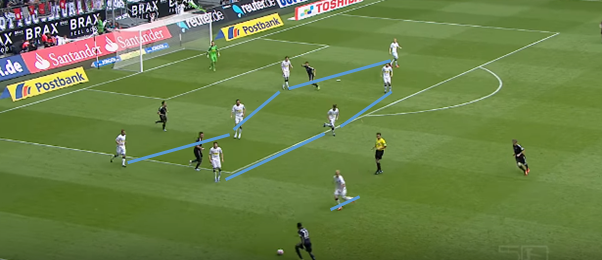
Opposition will often try to react and prevent the link player to turn and play forwards. Very common solution is centre back pushing up higher and getting tight with attacking midfielder to force him sideways or backwards. From their point of view, the danger is minimal as the ball can’t be immediately played into strikers and therefore their back line with one player less can deal with that.
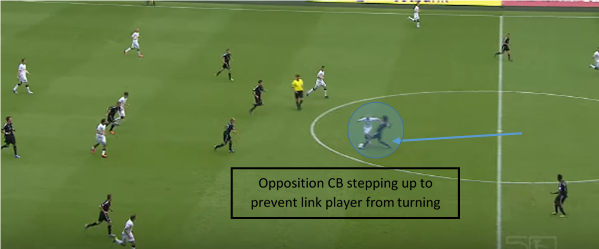
If the option to turn and play forwards is blocked, one of the options from the attacking point of view is to play wall pass back (set & go). This will enable the player on the ball to face the direction of attack and see more options to play forwards. First priority would be to then play the ball into strikers. As soon as attacking midfielder sets the ball back, he should make an immediate forward run to support strikers in case the ball gets played to them.
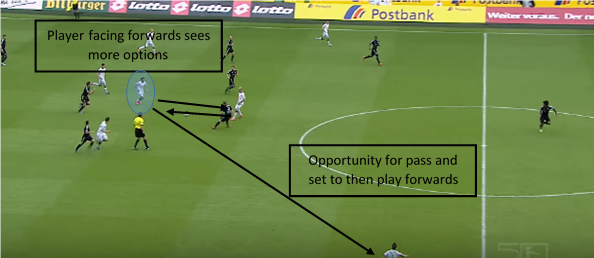
At the same time, players around the ball would be looking to make forward runs as well. These should be made into different spaces with a priority to go central over wide areas. Defensive cover and attacking options should be balanced. Having two centre backs and a defensive midfielder behind the ball would be a minimum to provide cover in case the ball is lost.
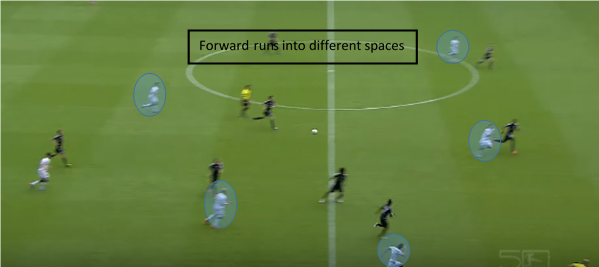
In the final phase of the attack, it might be useful to consider the right timing of the pass. Before the pass is made, player on the ball might choose to drive further forwards and commit opposition’s defender, at the same time creating more space for teammates.
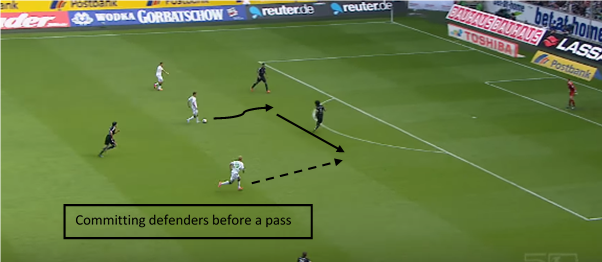
Apart from the intensity and tempo of the attack, players’ psychological attitude is vital. Players should be determined to go forwards as soon as possible and have a self-belief in their actions. Clear roles and responsibilities agreed as a team will be useful to instil confidence amongst players.
By Alex Trukan, Development Coach, Nottingham Forest
@AlexTrukan


